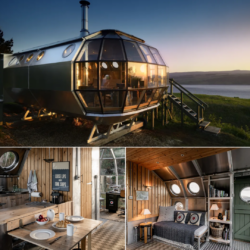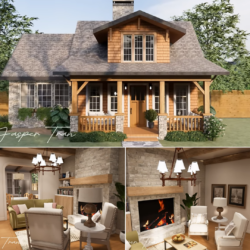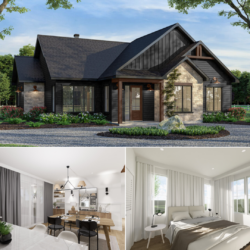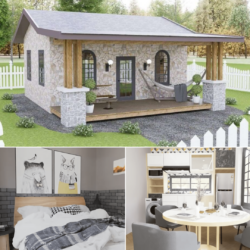
Classic tiny houses focus on traditional architectural styles. This style often uses natural materials such as wooden flooring, windows, and doors. Flat roofs, embroidery on window frames and details reminiscent of village houses are the characteristic features of this style. Classic tiny houses aim to create nostalgia and a warm atmosphere. Items such as wooden floors, rustic furniture, and ceiling moldings are often used in interiors. This design aims to meet the needs of modern living while reviving the texture of the past.
Modern tiny houses, on the other hand, adopt a minimalist approach. These designs focus on clean lines, smooth surfaces, and functionality. Modern tiny houses, generally dominated by white, gray, and other neutral colors, create a feeling of spaciousness and spaciousness with open-plan arrangements in the interior. Eye-catching glass surfaces draw natural light and bring the outside into the interior. Modern tiny houses also tend to lead the way in energy efficiency and sustainability. Features such as solar panels, gray water recycling systems, and highly insulated walls help minimize the environmental impact of this design style.
Both design styles utilize the compact structure of tiny houses, making efficient use of every square inch of space. Advanced storage solutions, multi-purpose furniture, and hidden storage areas make the layout of tiny houses sustainable. These design approaches offer a comfortable life in tiny houses with limited living space.

Classic and modern tiny house designs each have their unique features. The warm atmosphere and nostalgic texture of the classic style are perfect for those who want to establish a connection with the past. In this style, special details such as customized woodwork, reuse of old windows, and integration of vintage items reflect the character of the tiny house.

Modern style, on the other hand, adopts an approach where cleanliness, simplicity, and functionality are at the forefront. In smaller living spaces, every square meter must provide maximum benefit. Modern tiny houses respond to these needs with smart storage solutions, multi-purpose furniture, and technological innovations. It also focuses on energy saving and environmental sustainability. Features like solar panels, water recycling systems, and highly insulated walls make modern tiny homes more environmentally friendly.

Tiny houses also suit the mobile lifestyle. Some tiny house owners can move their houses with wheels attached to the drawer. This gives owners of tiny houses freedom and flexibility, the opportunity to explore new places, and the ability to move their living space wherever they want.

Classic and modern tiny house designs can be chosen depending on lifestyle, budget, and personal preferences. Both offer the advantages of compact living: lower ownership costs, lower energy consumption, and an environmentally friendly lifestyle. Tiny houses also require less maintenance and simplify living, shifting the focus to experiences and relationships rather than material possessions.





